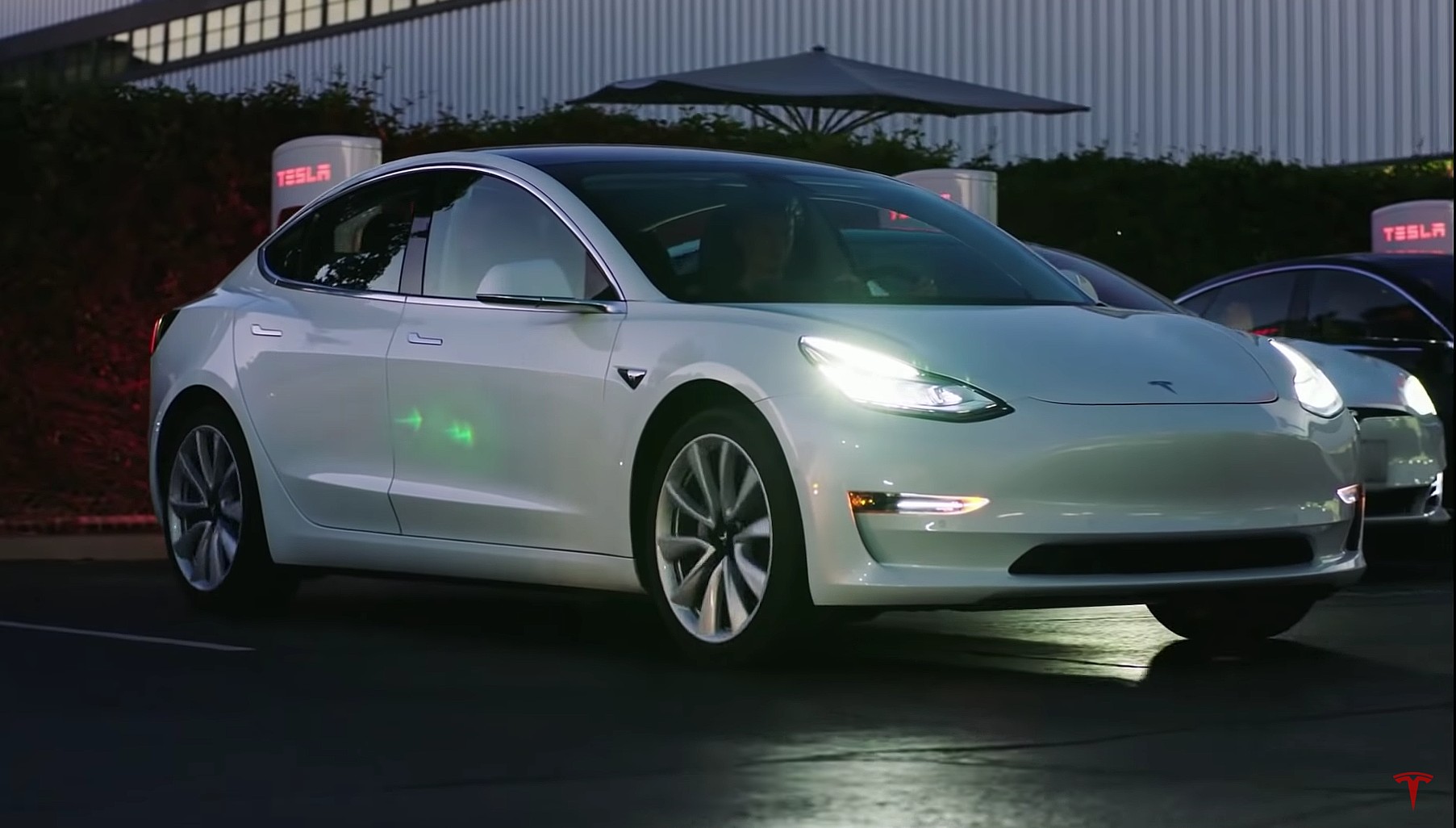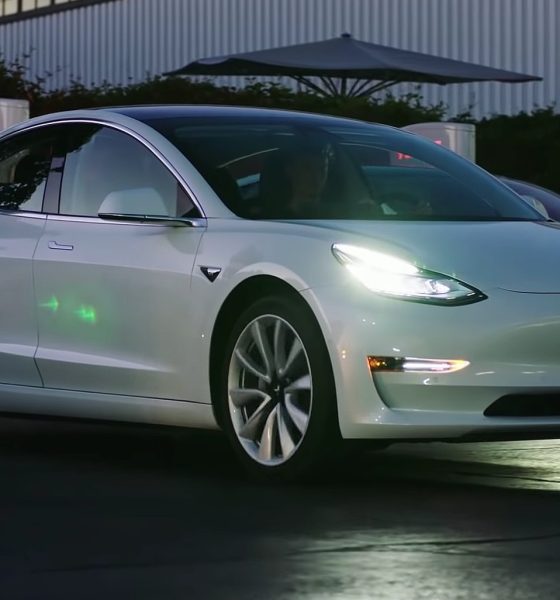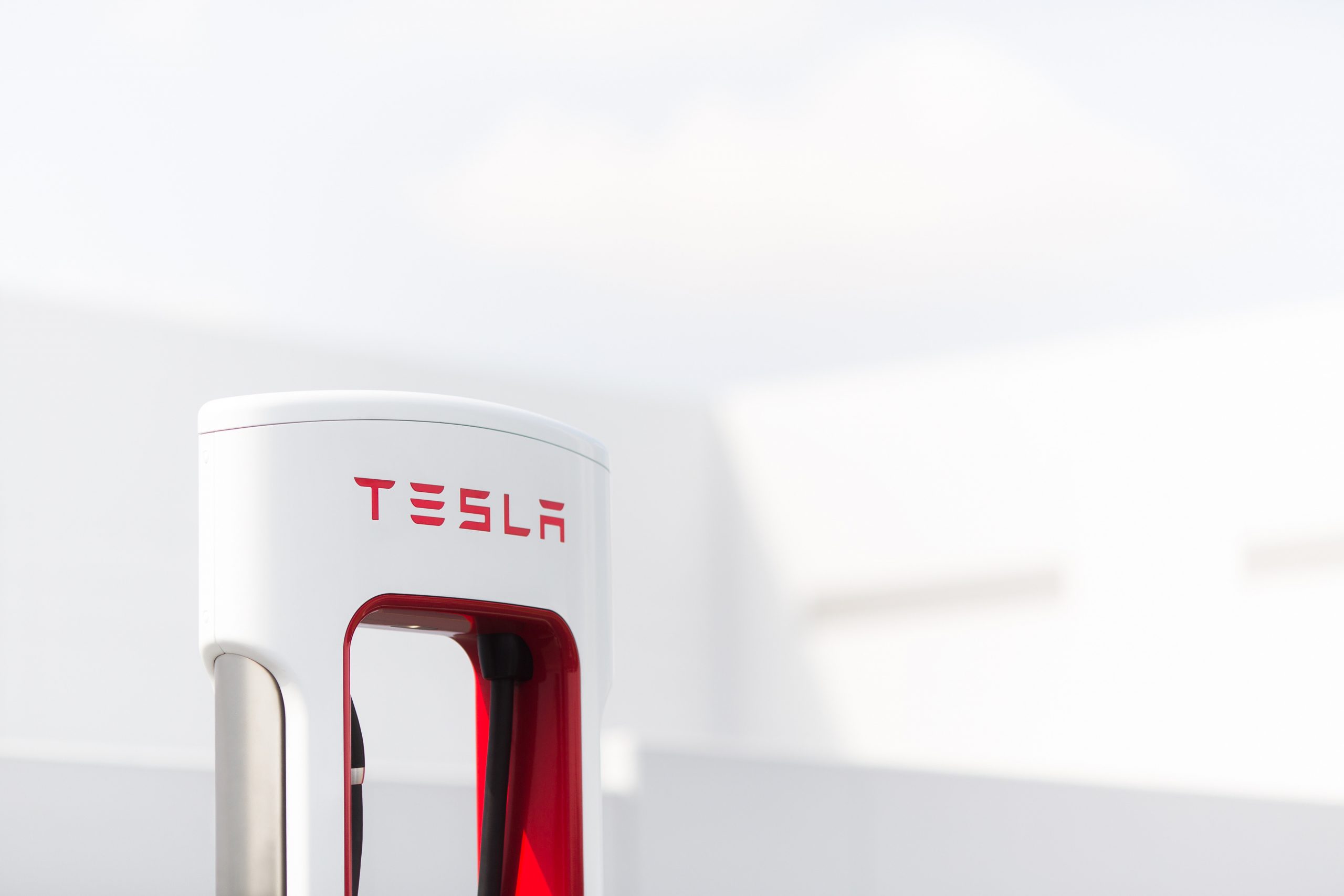

News
Lithium produced for Tesla’s batteries is less polluting than 31 cups of coffee: researcher
There are many criticisms of electric vehicles like Teslas, and one of them involves the notion that EVs require massive amounts of water to produce the lithium in their batteries. This idea, according to Dr. Maximilian Fichtner, who serves as the Director at the Helmholtz Institute for Electrochemical Energy Storage in Germany, is not accurate at all.
In a recent conversation with Tagesspiegel Background, the battery researcher stated that the production of electric car batteries is not as extreme as what EV critics would suggest. To produce the lithium needed for a 64 kWh battery pack, for example, Fichtner stated that about 3840 liters of water are evaporated according to usual calculation methods. This is roughly comparable to the production of 250 grams of beef, 30 cups of coffee, or half a pair of jeans, according to the researcher.
Explaining further, Fichtner stated that even before electric cars like Teslas became popular, lithium was already being used in large quantities in many industrial and chemical processes. Lithium-ion batteries are also widely used in mobile devices, which are universally accepted today. “I’m always surprised that the public never talks about lithium in laptops or mobile phones – but suddenly it’s a problem with the e-car,” the battery researcher said.
But the water consumption involved in the production of lithium for electric car batteries is just the tip of the iceberg. Fichtner estimates that a 64 kWh pack is likely in the middle of various variants of the Tesla Model 3 sedan, whose long-range versions can easily go beyond 450 km (280 miles) of range per charge. If one were to infer that an electric car battery pack can remain optimal with 2,000 full charging cycles, this could equate to a total distance of about 900,000 km. And that’s with estimates on existing battery technology.
With this in mind, it appears that Tesla’s lithium-ion batteries are actually less polluting than otherwise everyday items such as steak or the aforementioned 30 cups of coffee, since they have the potential to remain in service for a very long time. About 2,000 charging cycles, after all, would likely equate to years of average EV use.
Companies like Tesla are hard at work in improving their battery cells. This much is hinted at by Tesla executives such as CEO Elon Musk and President of Automotive Jerome Guillen, both of whom have noted that Tesla’s batteries are always evolving. Fichtner expects electric car batteries to have an average lifespan of 3,000 cycles by 2025, which would make EV batteries even more environmentally-friendly.
In his recent conversation with the publication, the researcher discussed one of the most sensitive topics surrounding battery production: cobalt. Cobalt has developed a very negative reputation due to the abhorrent conditions in cobalt mines in areas such as Congo. Fortunately, many automakers have since pledged to source the cobalt used in their EVs from areas that meet stringent standards. Tesla does this and more, with the electric car maker attempting to develop cobalt-free batteries in the near future.
For now, electric car makers are in a game of cobalt reduction, and in this sense, Tesla has a notable lead. The batteries used in Volkswagen’s well-received ID.3 hatchback, for example, contain about 12-14% cobalt. The Tesla Model 3, on the other hand, only contains about 2.9% cobalt as of 2018. Fichtner predicts that if things go well, cobalt-free batteries could enter the market as early as 2025.
Maximilian Fichtner received his Ph.D. in Chemistry/Surface Science with distinction and the Hermann Billing Award for his thesis in 1992. He currently serves as the professor for Solid State Chemistry at the Ulm University and Executive Director of the Helmholtz Institute Ulm for Electrochemical Energy Storage (HIU). He has also worked in collaboration with the German ministries of Economy and Research and Education, and has served as the Chair of the 1st International Symposium on Magnesium Batteries in 2016.

News
Tesla FSD’s newest model is coming, and it sounds like ‘the last big piece of the puzzle’
“There’s a model that’s an order of magnitude larger that will be deployed in January or February 2026.”

Tesla Full Self-Driving’s newest model is coming very soon, and from what it sounds like, it could be “the last big piece of the puzzle,” as CEO Elon Musk said in late November.
During the xAI Hackathon on Tuesday, Musk was available for a Q&A session, where he revealed some details about Robotaxi and Tesla’s plans for removing Robotaxi Safety Monitors, and some information on a future FSD model.
While he said Full Self-Driving’s unsupervised capability is “pretty much solved,” and confirmed it will remove Safety Monitors in the next three weeks, questions about the company’s ability to give this FSD version to current owners came to mind.
Musk said a new FSD model is coming in about a month or two that will be an order-of-magnitude larger and will include more reasoning and reinforcement learning.
He said:
“There’s a model that’s an order of magnitude larger that will be deployed in January or February 2026. We’re gonna add a lot of reasoning and RL (reinforcement learning). To get to serious scale, Tesla will probably need to build a giant chip fab. To have a few hundred gigawatts of AI chips per year, I don’t see that capability coming online fast enough, so we will probably have to build a fab.”
NEWS: Elon Musk says FSD Unsupervised is “pretty much solved at this point” and that @Tesla will be launching Robotaxis with no safety monitors in about 3 weeks in Austin, Texas. He also teased a new FSD model is coming in about 1-2 months.
“We’re just going through validation… https://t.co/Msne72cgMB pic.twitter.com/i3wfKX3Z0r
— Sawyer Merritt (@SawyerMerritt) December 10, 2025
It rings back to late November when Musk said that v14.3 “is where the last big piece of the puzzle finally lands.”
With the advancements made through Full Self-Driving v14 and v14.2, there seems to be a greater confidence in solving self-driving completely. Musk has also personally said that driver monitoring has been more relaxed, and looking at your phone won’t prompt as many alerts in the latest v14.2.1.
This is another indication that Tesla is getting closer to allowing people to take their eyes off the road completely.
Along with the Robotaxi program’s success, there is evidence that Tesla could be close to solving FSD. However, it is not perfect. We’ve had our own complaints with FSD, and although we feel it is the best ADAS on the market, it is not, in its current form, able to perform everything needed on roads.
But it is close.
That’s why there is some legitimate belief that Tesla could be releasing a version capable of no supervision in the coming months.
All we can say is, we’ll see.
Investor's Corner
SpaceX IPO is coming, CEO Elon Musk confirms
However, it appears Musk is ready for SpaceX to go public, as Ars Technica Senior Space Editor Eric Berger wrote an op-ed that indicated he thought SpaceX would go public soon. Musk replied, basically confirming it.

Elon Musk confirmed through a post on X that a SpaceX initial public offering (IPO) is on the way after hinting at it several times earlier this year.
It also comes one day after Bloomberg reported that SpaceX was aiming for a valuation of $1.5 trillion, adding that it wanted to raise $30 billion.
Musk has been transparent for most of the year that he wanted to try to figure out a way to get Tesla shareholders to invest in SpaceX, giving them access to the stock.
He has also recognized the issues of having a public stock, like litigation exposure, quarterly reporting pressures, and other inconveniences.
However, it appears Musk is ready for SpaceX to go public, as Ars Technica Senior Space Editor Eric Berger wrote an op-ed that indicated he thought SpaceX would go public soon.
Musk replied, basically confirming it:
As usual, Eric is accurate
— Elon Musk (@elonmusk) December 10, 2025
Berger believes the IPO would help support the need for $30 billion or more in capital needed to fund AI integration projects, such as space-based data centers and lunar satellite factories. Musk confirmed recently that SpaceX “will be doing” data centers in orbit.
AI appears to be a “key part” of SpaceX getting to Musk, Berger also wrote. When writing about whether or not Optimus is a viable project and product for the company, he says that none of that matters. Musk thinks it is, and that’s all that matters.
It seems like Musk has certainly mulled something this big for a very long time, and the idea of taking SpaceX public is not just likely; it is necessary for the company to get to Mars.
The details of when SpaceX will finally hit that public status are not known. Many of the reports that came out over the past few days indicate it would happen in 2026, so sooner rather than later.
But there are a lot of things on Musk’s plate early next year, especially with Cybercab production, the potential launch of Unsupervised Full Self-Driving, and the Roadster unveiling, all planned for Q1.
News
Tesla adds 15th automaker to Supercharger access in 2025

Tesla has added the 15th automaker to the growing list of companies whose EVs can utilize the Supercharger Network this year, as BMW is the latest company to gain access to the largest charging infrastructure in the world.
BMW became the 15th company in 2025 to gain Tesla Supercharger access, after the company confirmed to its EV owners that they could use any of the more than 25,000 Supercharging stalls in North America.
Welcome @BMW owners.
Download the Tesla app to charge → https://t.co/vnu0NHA7Ab
— Tesla Charging (@TeslaCharging) December 10, 2025
Newer BMW all-electric cars, like the i4, i5, i7, and iX, are able to utilize Tesla’s V3 and V4 Superchargers. These are the exact model years, via the BMW Blog:
- i4: 2022-2026 model years
- i5: 2024-2025 model years
- 2026 i5 (eDrive40 and xDrive40) after software update in Spring 2026
- i7: 2023-2026 model years
- iX: 2022-2025 model years
- 2026 iX (all versions) after software update in Spring 2026
With the expansion of the companies that gained access in 2025 to the Tesla Supercharger Network, a vast majority of non-Tesla EVs are able to use the charging stalls to gain range in their cars.
So far in 2025, Tesla has enabled Supercharger access to:
- Audi
- BMW
- Genesis
- Honda
- Hyundai
- Jaguar Land Rover
- Kia
- Lucid
- Mercedes-Benz
- Nissan
- Polestar
- Subaru
- Toyota
- Volkswagen
- Volvo
Drivers with BMW EVs who wish to charge at Tesla Superchargers must use an NACS-to-CCS1 adapter. In Q2 2026, BMW plans to release its official adapter, but there are third-party options available in the meantime.
They will also have to use the Tesla App to enable Supercharging access to determine rates and availability. It is a relatively seamless process.








